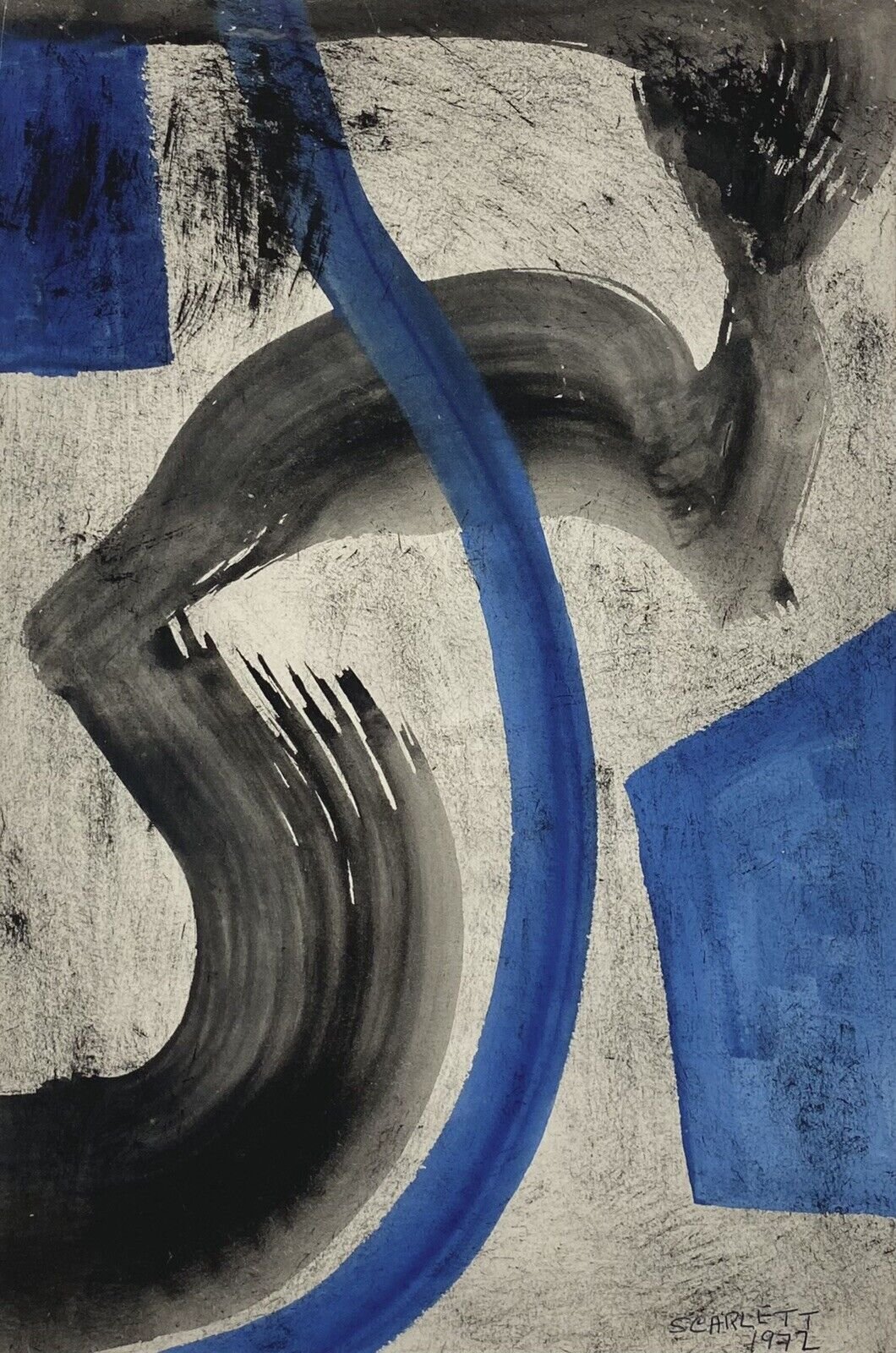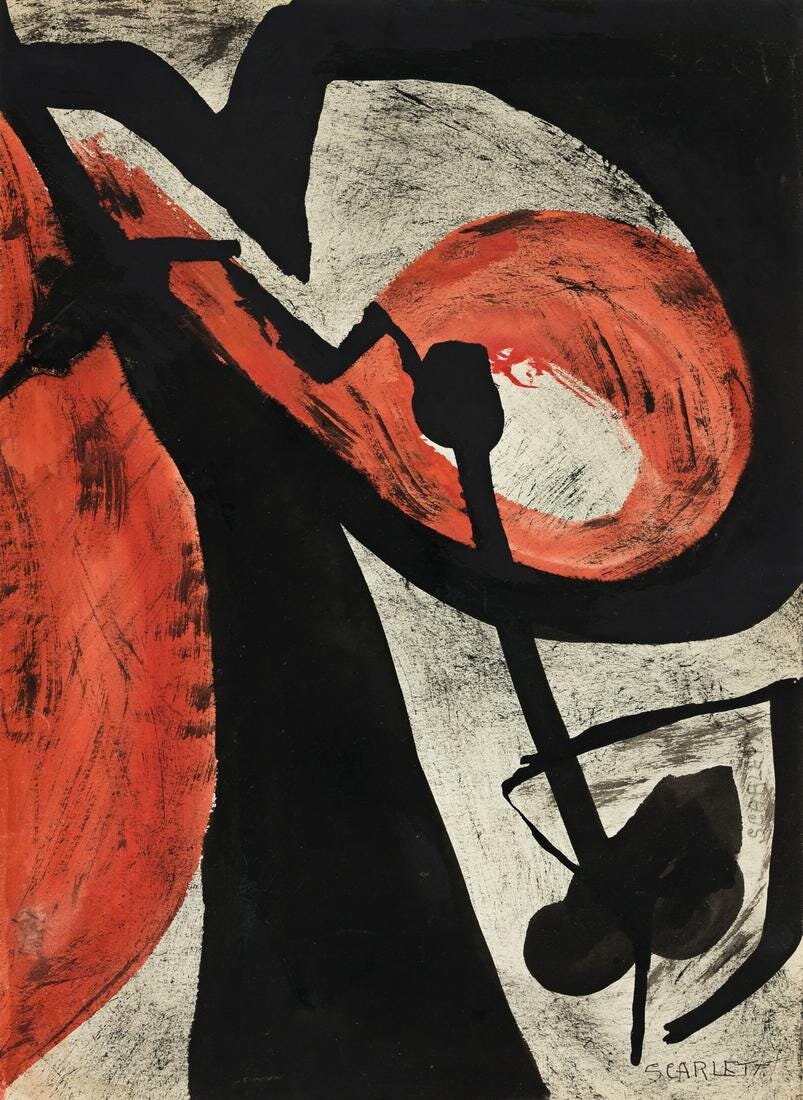Rolph Scarlett
Born on June 13, 1889 in Guelph, Canada, and into an artistic family, Rolph Scarlett spent his teenage years as an apprentice in his uncle’s jewelry firm and briefly studied at the Art Students League, New York. While working in the jewelry industry, Scarlett found time to paint and design theatrical sets in his free time, including one for the 1928 world premiere of Eugene O’Neill’s drama Lazarus Laughed (1926). In 1923, while on a business trip to Switzerland, Scarlett had met the artist Paul Klee and soon after abandoned his figurative painting style in favor of an abstract language that suggested more universal, cosmic truths.
In 1937, after permanently settling in New York, Scarlett became acquainted with the artist and curator Hilla Rebay, the first director of the Museum of Non-Objective Painting (renamed the Solomon R. Guggenheim Museum in 1952). Rebay provided Scarlett with a Guggenheim Foundation scholarship to paint full-time and obtained several of his paintings for the museum’s collection. From 1940 to 1946, Scarlett served as the museum’s chief lecturer, giving Sunday afternoon talks on art. Through Rebay, Scarlett became acquainted with the nonobjective works of Rudolf Bauer and Vasily Kandinsky and further refined his abstract style. Works from this era such as Yellow Bar (1942) are defined by overlapping geometric planes of bright, primary colors set against mute backgrounds. Scarlett avoided any reference to the outside world and believed that nonobjective painting was an act, in his words, of “pure creation.”
During his lifetime, solo shows of his work were held at the Jacques Seligmann Gallery, New York (1949); Sioux City Art Center, Iowa (1951); and Washburn Gallery, New York (1982). In addition to appearing in several important group shows at the Museum of Non-Objective Painting and the Guggenheim Museum, Scarlett’s work was also presented at the Metropolitan Museum of Art, New York (1950); Whitney Museum of American Art (1951); and Museum of Art, Carnegie Institute, Pittsburgh (now Carnegie Museum of Art, 1983). In his later years, Scarlett moved to upstate New York and continued to paint and design jewelry. Scarlett died on August 7, 1984, near Woodstock, New York.

Untitled Abstraction
1972
Gouache on paper
17.5 x 11.75 inches
Signed and dated lower right
Provenance:
Lawrence Fine Art, NY
Eric Firestone Gallery, NY
Jarrett McCusker Gallery, NY
$4,000

Untitled (Study in Red and Black)
c. 1935
Ink, and watercolor on paper
16 x 12 inches
Signed lower right
Provenance:
The Estate of Rolph Scarlett
Fletcher Gallery, Woodstock, NY
Portico New York, NY
William Meyers, NY.
Exhibited:
Weinstein Gallery, San Francisco, CA, Rolph Scarlett: Listen with Your Eyes, March - April, 2011.
SOLD
